Captive Category Voting Analysis and Related Comments
Totals of the Judges’ Votes (each of 5 judges awarded each image 1-5 points):
1-Toucan: 23
2-Philippine Eagle: 21
3-Great Horned Owl on curved branch: 18
4-Red-tailed Hawk: 17
T5-Bald Eagle screaming: 16
T5-Flamingo head & neck: 16
T5-Flamingo legs with shadow: 16
8-Barred Owl sleeping: 11
T9-Waterfowl Sleeping: 9
T9-Great Horned Owl vertical: 9
Public Voting Totals (each of you was asked to vote your five favorite images 1-5 points with 5 being your favorite):
1-Toucan: 444
2-Philippine Eagle: 429
3-Red-tailed Hawk: 285
4-Great Horned Owl vertical: 175
5-Flamingo head & neck: 151
6-Waterfowl Sleeping: 140
7-Bald Eagle screaming: 134
8-Great Horned Owl on curved branch: 133
9-Flamingo legs with shadow: 108
10-Barred Owl sleeping: 86
The images below are presented in the order of the judges’ placement as above along with my comments.
|
Toco Toucan, Image copyright 2102: Stan Hoyt |
The toucan image above was a narrow winner in both the public and the Judges’ voting. The bright colors, black background, tight composition, and wire-cage eye highlight caught everyones’ eye. That said a slightly wider crop, a bit of bill clean-up, and a Linear Burn on the WHITEs would have made this one even stronger. Darkening and evening out the background and selectively applying Noise Reduction and a Surface Blur there would have done the same. None-the-less the graphic impact of this image won the day.
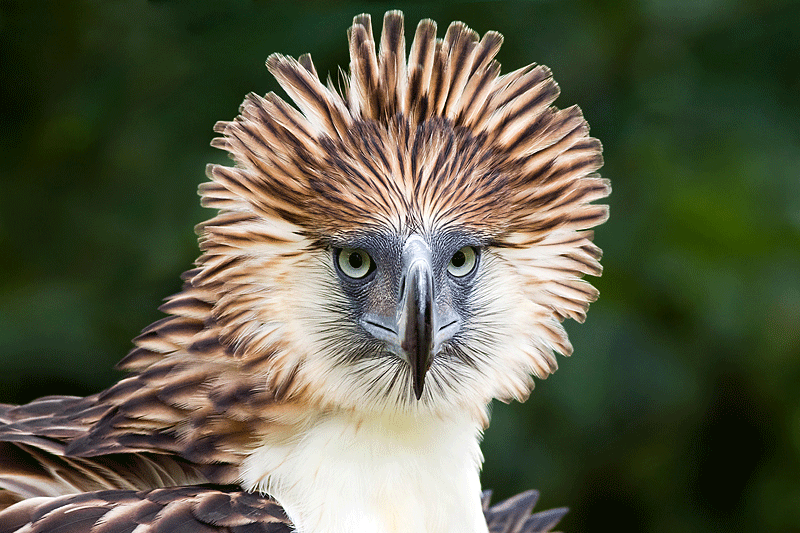
Philippine Eagle, Image copyright 2012: Alain Pascua. Before and after animated GIF. |
The regal and powerful Philippine Eagle image featuring this majestic bird’s spectacular raised crest was runner-up in both voting categories. With some Photoshop work that would include background smoothing and bill clean-up (both allowed by the lenient competition rules) this image might have overtaken the toucan image for first place; unusually light areas of background will almost always draw the viewer’s attention away from the subject as the whitish circles did here…. For the background clean-up Denise Ippolito (thank you very much Lady D) used a reduced opacity Clone Stamp Tool, the Patch Tool, and an inverse layer mask and selectively ran Noise Reduction on only the background. I added a bit of bill clean-up to produce the “after” image in the animated GIF above. All as described in detail in Digital Basics.
|
Great Horned Owl on curved branch, Image copyright 2012: Eric A. Rosen. |
This image–by a very small margin–did well better in the judges’ voting than in the pubic voting. I loved the rolling hills, the killer clouds, and those huge talons but especially the creativity that went into the design of the image. Selectively lightening the subject would have improved this one.
|
Red-tailed Hawk |
This very strong and sharp image with the killer wing position suffered only from the the dark above/light below background with the strong line of demarcation between the two. Images with dark above/light below motifs almost always have a strike against them as the light area dominates and draws the viewer’s eye. Fourth place with the judges and third place with the public represents another strong correlation in the voting, a clear indication that the cream has risen to the top in this category.
|
Bald Eagle screaming, Image copyright 2012: Paul Klenck. Canon 50D and tripod-mounted Canon 300/2.8 + 1.4x. f5 at 1/160, ISO 200. |
|
Flamingo head and neck |
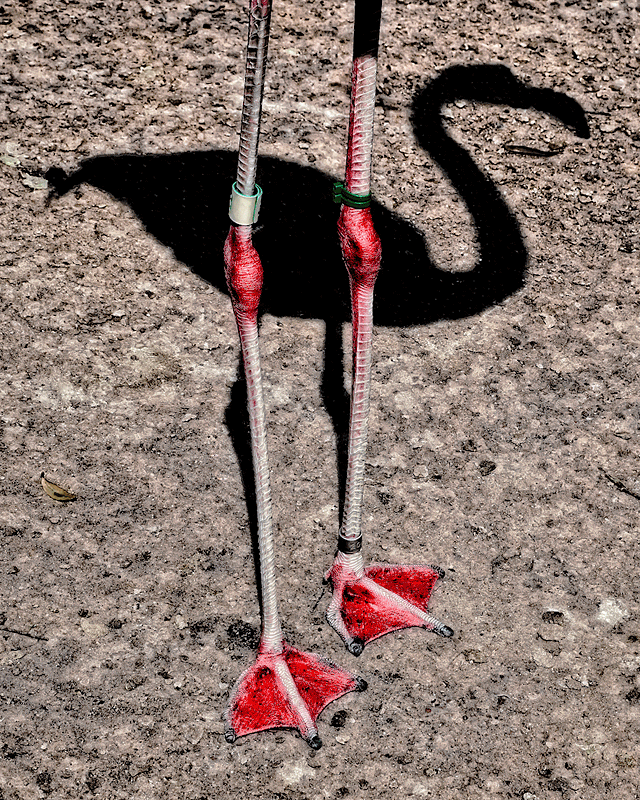
Flamingo legs with shadow before and after |
The three images above finished in a tie for 5th place in the judge’s voting. “Bald Eagle screaming” (7th in the public vote) is a powerful image with a sweet background and a good head angle. Bringing up a bit more detail in the WHITEs on the top of the head would have improved it. This image and many Bald Eagle images in the contest seemed to suffer a bit of prejudice with the official judges perhaps because they have been seeing too many good photos of this species in recent year. “Flamingo head and neck” (5th in the public vote) is an elegant and beautifully designed zoo shot; the curve of the neck captivated everyone. “Flamingo legs with shadow” (9th in the public voting despite some ardent supporters) did the same by way of the wonderfully creative image design. Both Denise and I felt that it too could have been greatly improved within the rules. For the after image I cleaning and blackened the shadow, cleaned up the substrate, and reduced the contrast as seen in the animated GIF above. Clean-up and contrast adjustments as described in detail in Digital Basics.
|
Barred Owl sleeping |
“Barred Owl sleeping” placed 8th in the official voting and 10th in the public voting. Those sky blue eyelids make this peaceful a joy to behold. A bit darker overall with a bit more contrast would have improved this one.
| –
Waterfowl sleeping |
|
Great Horned Owl vertical |
The two images above tied for 9th in the judges’ standings. Many (including me) loved the colors and the soft tones in “Waterfowl sleeping” (a stronger 6th in the public voting). I am pretty sure that some of the judges felt as I did that this one was a bit tight in the frame and that the steep angle of declination to the subject detracted somewhat. “Great Horned Owl vertical” is a pretty much perfect image; I could not think of a single way to improve it. It is nicely framed, the light is sweet, the green background and the mossy perch are killer, the open bill is a plus, and those huge talons rock. It suffered only from the strong competition and, as with the screaming Bald Eagle, perhaps from a bit of judicial prejudice; this is a commonly photographed rehab species. On second thought, a bit more room all around would have yielded a more pleasing image.
Comments Welcome
Your comments on the images, on my analysis, or the voting are of course welcome. Again we ask those who had honored images to leave a comment letting us know their name, which image or images are theirs, the location, and the gear that they used.
B&H Double Rebates Include the 5D Mark III
Click here. Select one of four current Canon camera bodies–both the EOS-5D Mark III and the EOS-7D are in the group. Add a lens–there are 30 in the group, a Series III teleconverter, or a Speedlite, and enjoy large double rebates. The lenses include lots of my favorites: the 70-200mm f/4 L IS, the 70-200mm f/2.8L IS II, the circle lens, the 180 macro, and the 300mm f/4L IS. You can check the specs on all Canon telephoto lenses here. This double rebate offer expires on April 2, 2012.
Nikon Dslr + Lens Bundle Rebates
Click here for details. Offer includes the brand new D3200 and the D7000.

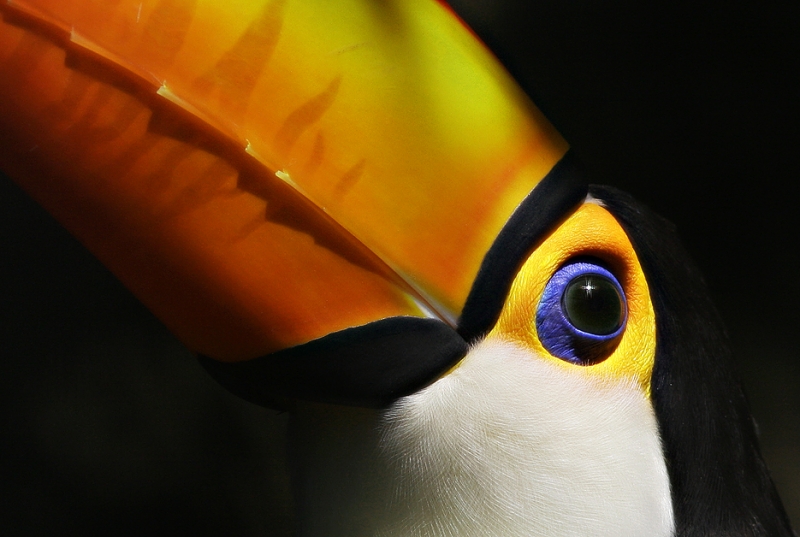
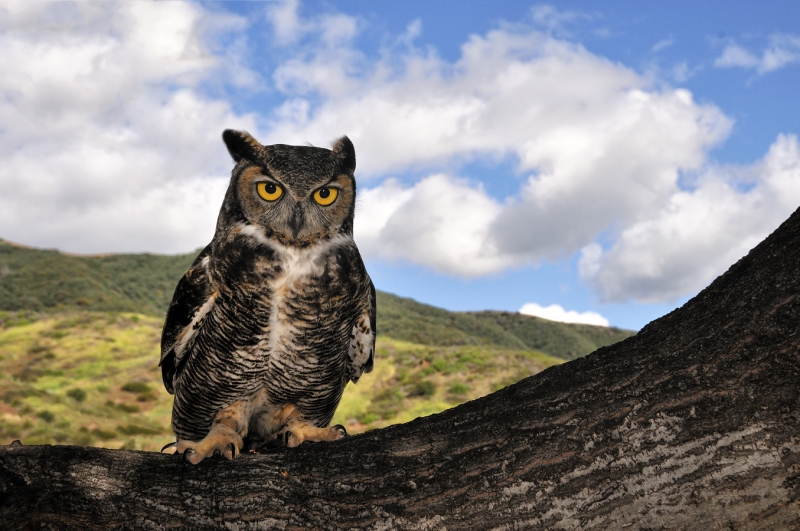
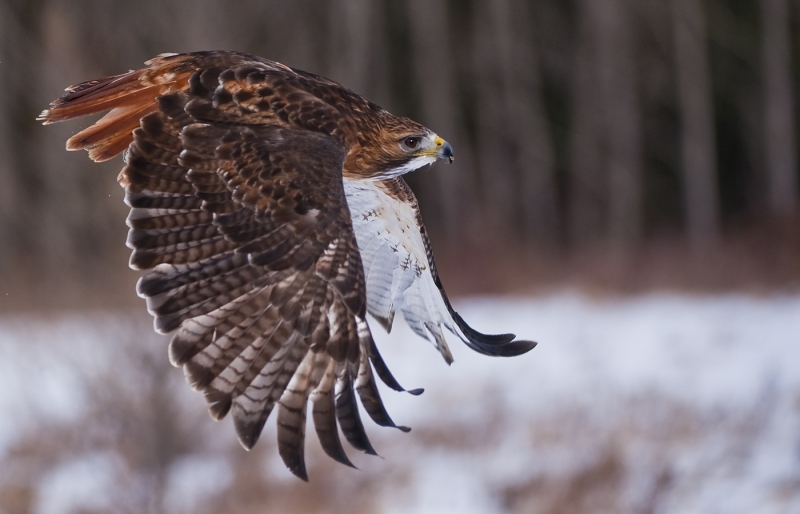
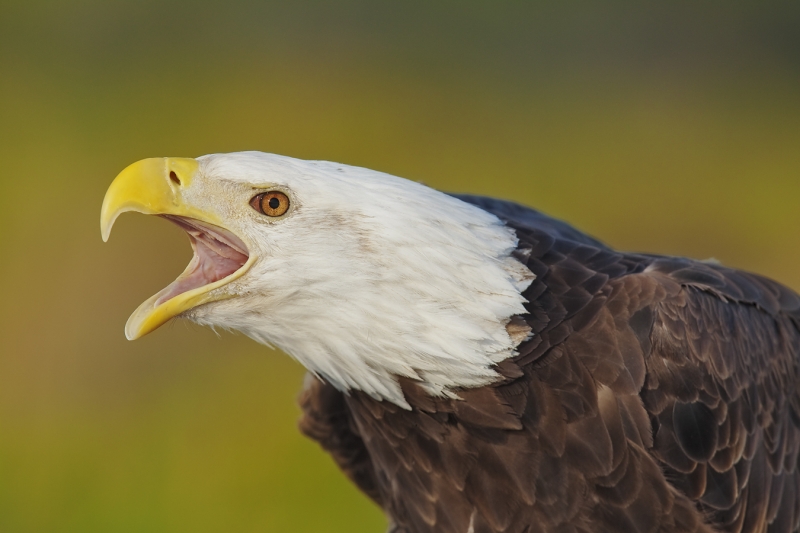
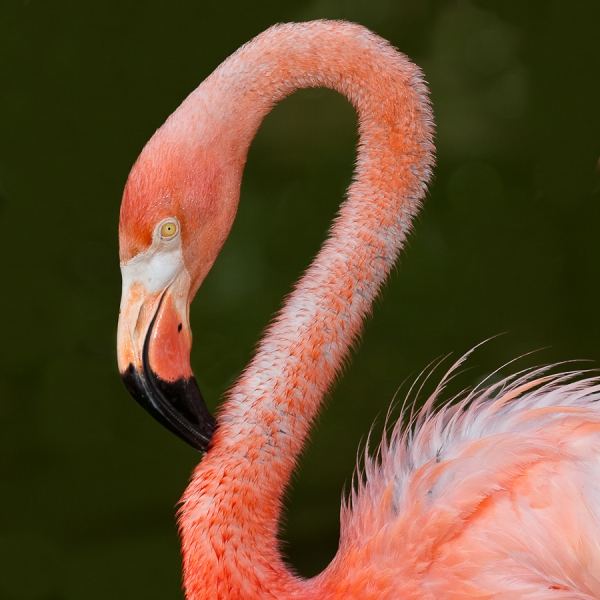
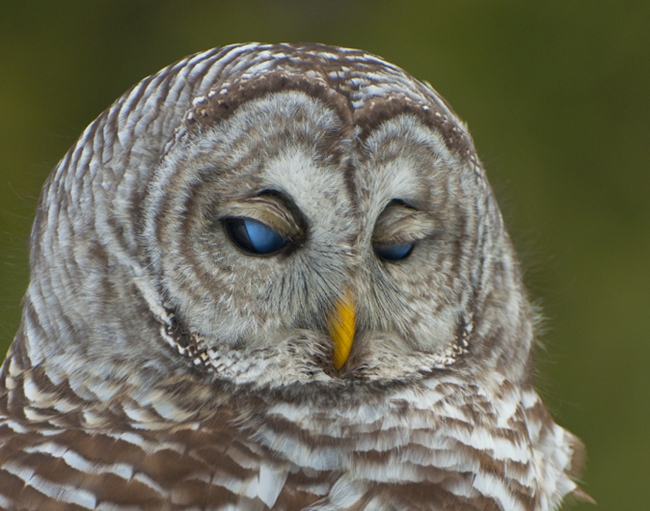
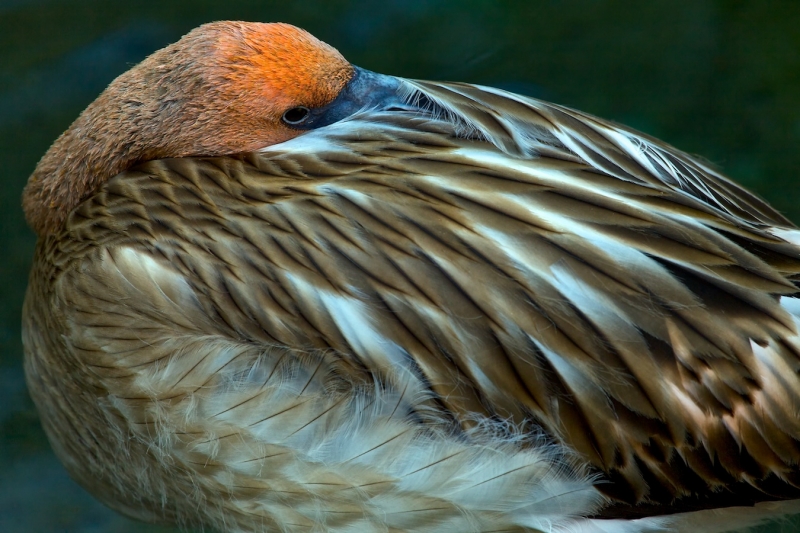
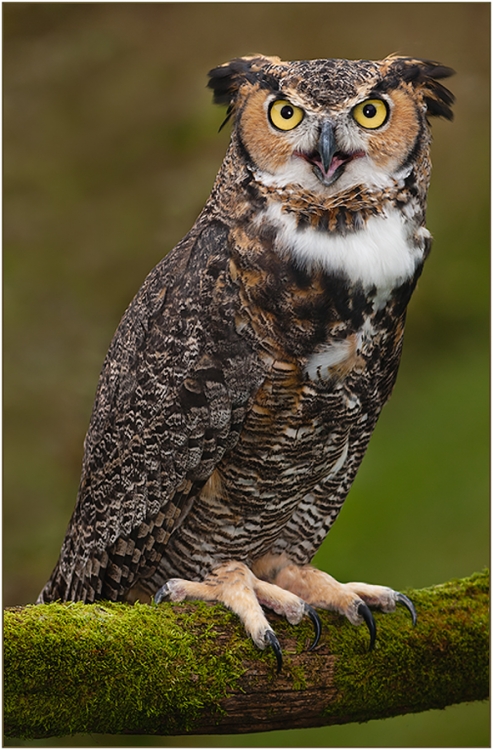














Your second thought on the vertical Great Horned Owl was my first thought,a little more room all around would improve the image.
The fact that a photograph as beautiful, and technically perfect as Great Horned Owl would place last to me indicates the high quality and superb skill of the photographers of the winning photographs.
I am deeply impressed. The inspiration is beyond the moon!
I agree with a few of the other people who posted, it is very educational to have the annotations with the winning photos. I wouldn’t have thought of the “strikes against” the red tailed hawk until you pointed it out (my criticism is that it seems a little to tightly cropped, that is, I would have liked a little more space between the end of the tail and the edge of the photo. That said, I would love to have taken that shot.). The post-processing on phillipine eagle and on flamingo legs is also quite informative. While this is often shown on your own work, demonstrating on other strong photographs that had been entered in the contest is illuminating.
Hey Jay, Many sincere thanks. Lots more coming 🙂 artie
I am asked to contact BAA.
All of the images on the blog and the website are right-click protected. If you right-click on an image we ask that you e-mail us to inquire about purchasing rights to the images :).
Thank you very much Artie and all of the judges for the recognition bestowed on the Great Philippine Eagle. I have watched with great interest and excitement this blog and the comments from readers ever since the popular voting started, but restraint myself from commenting as my entry is one in the competition. Now that judging is over, let me express my gratitude and appreciation to the judges and to all readers who have commented. I have never expected my image to go this far, not in my wildest imagination that it can even reach the final stage, much more a runner-up in an international competition. This is the first international competition I joined.
Reading this blog and the comments is very enriching and educational. I should have regularly read all of Artie’s blogs and postings at the Birdphotographers.net and gained more knowledge and skills in presenting more pleasing and great bird photos. I will in the next few days post pictures, understand critiques and improve my imaging.
Seeing the before and after photos of the Great Philippine Eagle is astounding! Those little tweakings in Photoshop really make wonder in the presentation. Honestly, I did not attempt to do that for fear of violating the rules, though I doubt if I could match the “after” image presented above. Now I’ve learned that “unusually light areas of background will almost always draw the viewer’s attention away from the subject as the whitish circles did,” so I will always try to have a background that will not distract the viewer.
I was also tempted to present the image in vertical or portrait format, by cutting off the spaces at the left and right, together with the whitish circles therein, but the beak will remain as is as I haven’t tried doing a “beak clean-up” before. I don’t know if a vertical presentation will produce the same or greater impact as that of the landscape format. It would be great to know the readers’ take on this and other alternative prsentations.
Again, thank you, Artie, Darrell Gulin, Chris Van Rooyen, Julie Zickefoose, Tim Laman, and all those who voted for the Great Philippine Eagle and commented on its image. I’m learning fellows and it’s great to be in your company.
Hi Alain, Thanks for your nice note. With this image, I like the horizontal format with the bird pretty much centered. You are most welcome :). BTW, you can learn pretty much everything that I know about image optimization in Digital Basics that also includes my complete digital workflow.
Most educational! A pleasure to read the annotations…thank you for sharing this. I especially enjoyed the before-and-after shots…
Many thanks. I may share one or two more today before going on to the Youth category.
Thank you for including your comments. The cycling before and after on the Philippine Eagle is dramatic.
Thanks George. That’s why I asked Denise Ippolito for her help with the BKGR. She taught me to use Inverse or Hide-All masks; this technique was included in the last update of Digital Basics beginning on page 99. George was with me on the Morro Bay IPT; we wound up naming his favorite spot after him: “George’s Corner,” the southeastern corner of a marina frequented by several species of grebes and ducks.
Hey Artie – enjoyed the detailed analysis. You are really going above and beyond what I was expecting for this contest.
One comment, I think it would be great though to see the names of the photographers alongside the images on this post. I’m curious to know who took some of them.
Congratulations to everyone for a job well done. I can’t wait to see the rest of the categories!
Thanks
Charles
Thanks Charlie. Who’s the guy in the avatar? 🙂 There is tons more contest-related learning coming. We have asked those whose images were in the top ten to post a comment letting us know their name. We do have them but right now I am a bit on the busy side. And the all-valuable Peter Kes is on holiday in Germany. At some point we will likely create a gallery that will include the name of the creator, the species, the location, and the gear that they used.